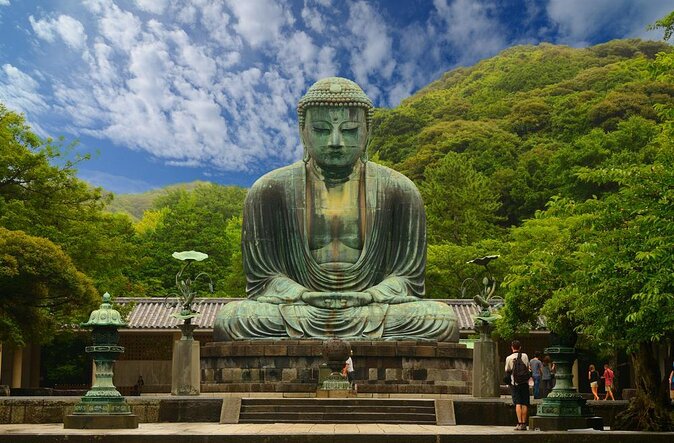Are you fascinated by the beauty and grace of Japanese calligraphy? Have you ever wondered what it would be like to learn about this ancient art form?
The Japanese Calligraphy Experience offers you the opportunity to explore the world of Shodo, or Japanese calligraphy, and discover the meditative and artistic journey it offers.
This concise and informative article will guide you through the history and techniques of Japanese calligraphy, from the tools and materials used to the proper posture and strokes required to create visually stunning works of art.
You will also learn about the cultural and spiritual significance of calligraphy, exploring how it is intertwined with Zen Buddhism and the concept of mindfulness.
Get ready to unleash your creativity and experience the freedom that Japanese calligraphy brings.
Quick Takeaways
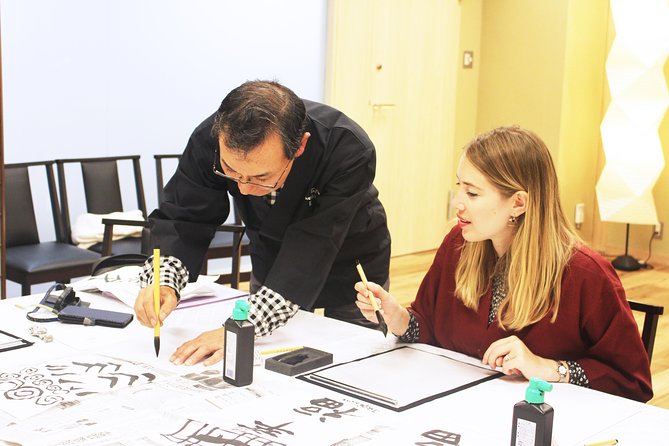
- Japanese calligraphy has a long history and holds immense significance in Japanese culture, being used in poetry, tea ceremonies, and martial arts.
- Essential tools for calligraphy include the brush, ink stick, inkstone, calligraphy paper, and paperweight.
- Japanese calligraphy emphasizes bold, flowing strokes and practicing it has therapeutic benefits.
- Kanji characters have different styles and cultural significance, allowing calligraphers to choose characters that align with their desired message and artistic vision.
History of Japanese Calligraphy
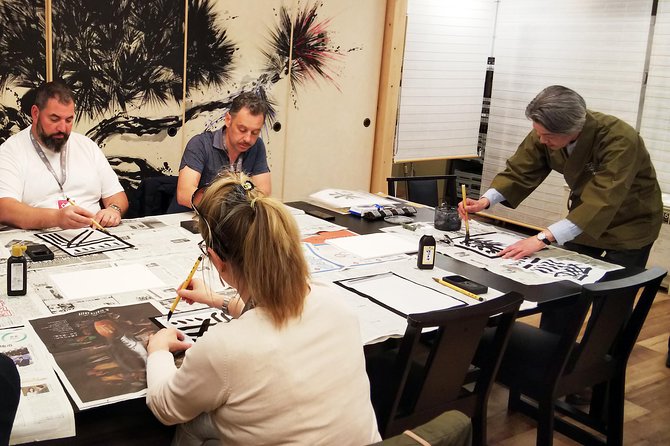
When did Japanese calligraphy originate?
Japanese calligraphy, also known as shodo, has a long and rich history that dates back to ancient times. It originated in China and was introduced to Japan around the 6th century, during the Asuka period.
Over the centuries, Japanese calligraphy has evolved, with different styles emerging and influencing the art form. The evolution of calligraphy styles can be traced through various historical periods, such as the Heian, Kamakura, and Edo periods.
Calligraphy holds immense significance in Japanese culture, as it isn’t just a form of artistic expression but also a means of communication and meditation. It has been deeply ingrained in various aspects of Japanese life, including poetry, tea ceremonies, and even martial arts.
The influence of calligraphy in Japanese culture is evident in its elegance, precision, and profound impact on aesthetics.
Tools and Materials for Calligraphy
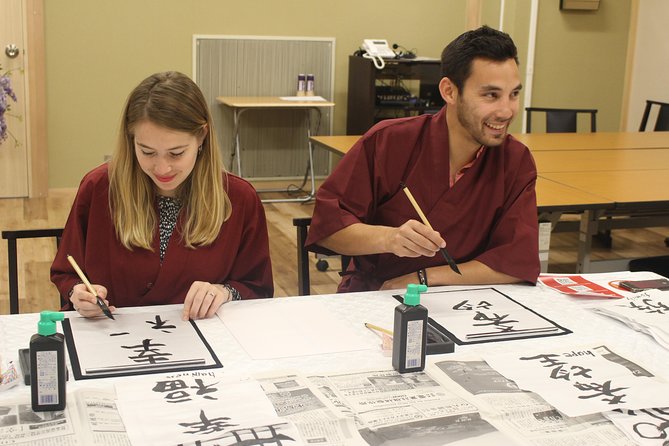
What materials and tools are necessary for practicing Japanese calligraphy?
Here are five essential items for calligraphy enthusiasts:
- Fude (brush): The brush is the heart of calligraphy, with different sizes and types available for various styles and strokes.
- Sumi (ink stick): Made from soot and glue, the sumi is rubbed with water on an inkstone to create the ink used in calligraphy.
- Suzuri (inkstone): The inkstone is where the sumi is ground and mixed with water to produce the desired consistency of ink.
- Kami (paper): Traditional calligraphy paper is thin yet absorbent, allowing the ink to flow smoothly and create beautiful strokes.
- Bunchin (paperweight): Used to hold down the paper and keep it in place while writing, the bunchin prevents any unwanted movement.
These tools and materials are essential for anyone looking to explore the art of Japanese calligraphy and experience the freedom and creativity it offers.
Basic Strokes and Techniques
The art of Japanese calligraphy comes alive as practitioners master the basic strokes and techniques, allowing them to express their creativity and explore the art form in greater depth. Calligraphy, in its various forms, has been practiced in different cultures around the world for centuries. Each culture has its own unique style and techniques, showcasing the beauty and diversity of the written word. Japanese calligraphy, known as "shodo," emphasizes the use of bold, flowing strokes to create characters and symbols. Practicing calligraphy has been found to have therapeutic benefits, such as reducing stress and improving focus and mindfulness. It provides a sense of freedom and self-expression, allowing individuals to connect with their inner creativity and find solace in the act of writing.
| Basic Strokes | Description | Example |
|---|---|---|
| Kaisho | Standard style, with clear-cut lines and equal spacing | 亜 |
| Gyosho | Semi-cursive style, with flowing and connected strokes | 亜 |
| Sosho | Cursive style, characterized by its quick and elegant strokes | 亜 |
| Hiragana | Curved and rounded strokes, used for phonetic characters | あ |
Choosing the Right Kanji Characters
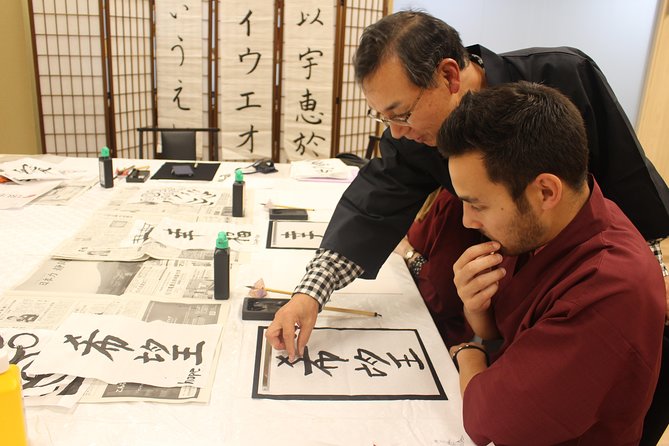
After mastering the basic strokes and techniques of Japanese calligraphy, practitioners can explore the art of choosing the right kanji characters to further enhance their creative expression. When selecting kanji characters, there are various styles to consider, each with its own unique aesthetic. These styles include kaisho (block style), gyosho (semi-cursive style), and sosho (cursive style), among others.
Each style offers different levels of complexity and artistic flair, allowing calligraphers to choose the one that best suits their desired message and artistic vision. Along With the aesthetic appeal, kanji characters hold significant cultural significance in Japanese calligraphy. They embody the rich history and traditions of Japan, evoking a sense of reverence and respect for the written word.
Through the careful selection of kanji characters, practitioners can infuse their calligraphy with deeper meaning and cultural resonance.
Guided Practice and Feedback
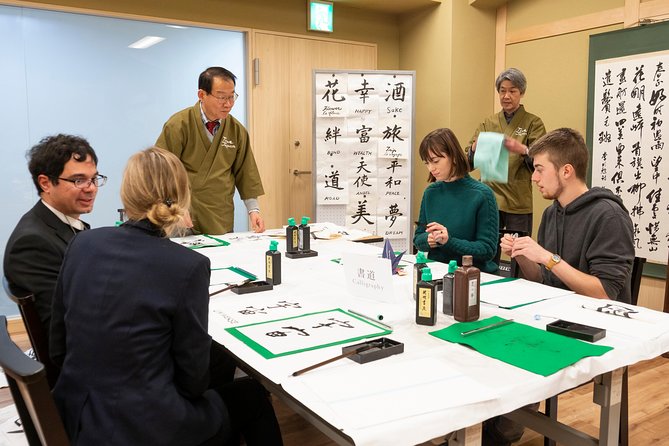
Practitioners of Japanese calligraphy receive expert guidance and constructive feedback to refine their skills and deepen their understanding of the art form.
In calligraphy workshops, participants are guided by experienced instructors who teach them the fundamental techniques and principles of Japanese calligraphy. These workshops provide a supportive and encouraging environment where participants can practice their strokes and learn proper brush handling.
The instructors give individualized attention and feedback to each participant, helping them improve their technique and develop their own unique style.
Plus, calligraphy exhibitions offer practitioners the opportunity to showcase their work and receive feedback from a wider audience. These exhibitions not only provide validation and recognition for their efforts but also serve as a platform for further growth and learning.
Showcasing Your Calligraphy Skills
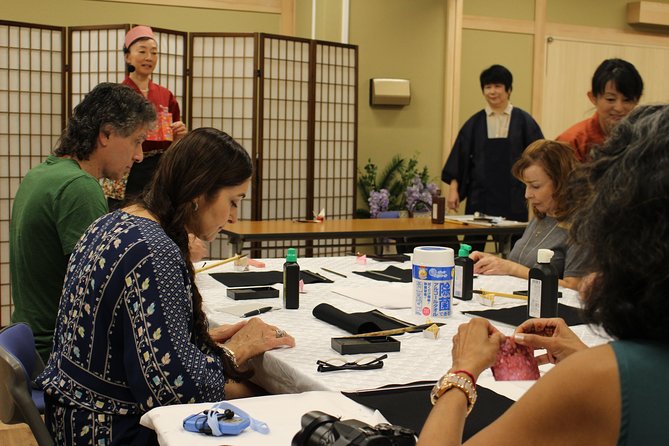
Participants in Japanese calligraphy workshops have the opportunity to showcase their calligraphy skills and receive feedback on their work. This allows them to not only display their talent but also learn from experienced instructors and fellow enthusiasts.
Here are five reasons why showcasing calligraphy skills is a rewarding experience:
- Calligraphy as a form of mindfulness and relaxation: Displaying your calligraphy skills allows you to share the peaceful and meditative nature of this art form with others.
- Cultural significance of calligraphy in Japan: Showcasing your calligraphy skills helps preserve and promote the rich cultural heritage associated with this traditional Japanese art.
- Personal expression: Exhibiting your calligraphy work enables you to express your unique style and personality through brushstrokes and letterforms.
- Building connections: Sharing your calligraphy skills creates opportunities to connect with other calligraphers, artists, and enthusiasts who share your passion.
- Inspiring others: Showcasing your calligraphy skills can inspire and encourage others to explore this beautiful art form, fostering a sense of creativity and appreciation for Japanese culture.
Common questions
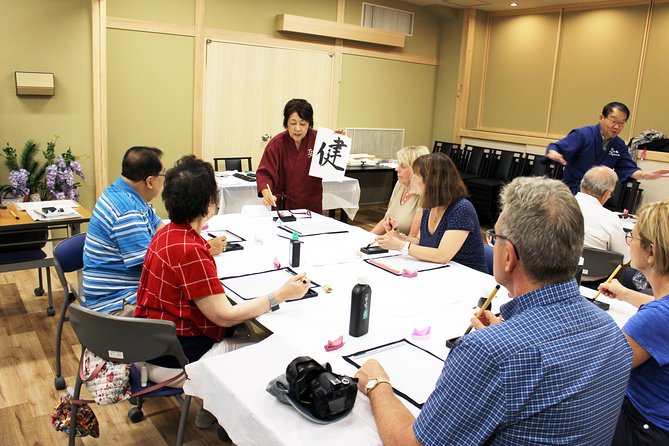
How Long Does the Japanese Calligraphy Experience Usually Last?
The Japanese calligraphy experience typically lasts for about 1 to 2 hours. There are no age restrictions, making it suitable for all ages. Participants can expect to learn the art of calligraphy and create their own beautiful pieces.
Are Children Allowed to Participate in the Japanese Calligraphy Experience?
Children are allowed to participate in the Japanese Calligraphy Experience. There are no age restrictions, making it a family-friendly activity. They can learn and practice the art of calligraphy alongside their parents or guardians.
Are There Any Specific Clothing Requirements for the Japanese Calligraphy Experience?
There are no specific clothing requirements or attire guidelines for the Japanese Calligraphy Experience. Participants are free to wear comfortable clothing of their choice.
Is It Necessary to Have Any Prior Experience or Knowledge of Calligraphy to Participate?
Prior experience or knowledge of calligraphy is not necessary to participate in the Japanese Calligraphy Experience. Participants of all levels can join and learn the art of Japanese calligraphy in a fun and welcoming environment.
Can I Take Home the Calligraphy Artwork That I Create During the Experience?
Yes, participants can take home their calligraphy artwork created during the experience. This allows them to preserve their creations and enjoy them outside of the workshop.
The Sum Up
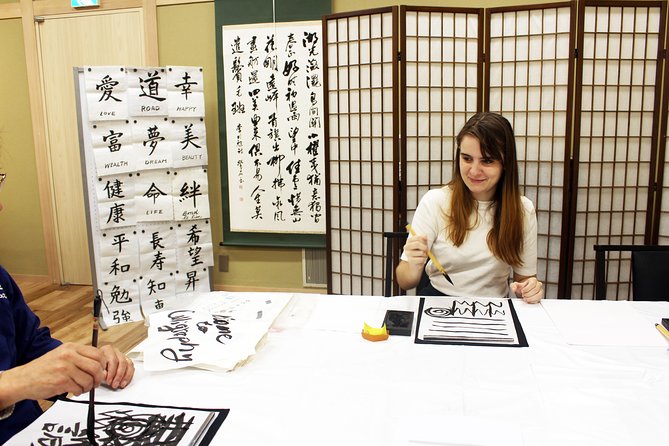
To sum it up, Japanese Calligraphy, or Shodo, offers a captivating and culturally enriching experience. Through its deep roots in Japanese culture, intricate brushwork, and philosophical aspects, it provides a unique artistic journey.
By exploring the history, techniques, and significance of Japanese Calligraphy, readers can gain a comprehensive understanding of this ancient art form. Whether seeking mindfulness or artistic expression, delving into the world of Japanese Calligraphy is sure to be a rewarding and immersive experience.



